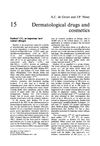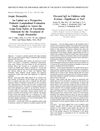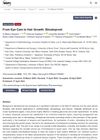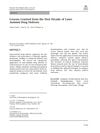British Hair and Nail Society
July 2018
in “
British Journal of Dermatology
”
alopecia areata AA timolol maleate T-cell populations immune system 3dMD camera system forehead surface area frontal fibrosing alopecia FFA diphenylcyclopropenone DPCP dithranol folliculitis decalvans FD antibiotic resistance S. aureus yellow nails syndrome vitamin E contact allergy acquired progressive kinking of hair gel nail polish timolol 3dMD camera Staphylococcus aureus kinking of hair
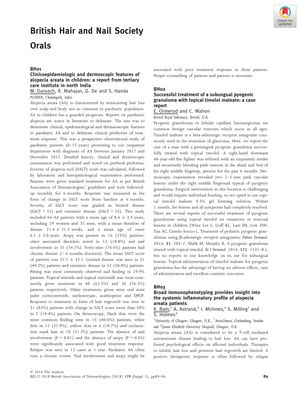
TLDR Hair regrowth was seen in 83% of children with alopecia, immune system plays a role in the condition, and various treatments showed effectiveness for hair and nail disorders.
The document from the British Hair and Nail Society details several studies and case reports on hair and nail conditions. A study with 64 pediatric patients with alopecia areata (AA) found that 83% showed hair regrowth, with the absence of nail involvement and atopy associated with better treatment response. A 40-year-old man with periungual pyogenic granuloma was successfully treated with topical timolol maleate. Another study involving 43 volunteers revealed significant changes in T-cell populations in AA patients, suggesting immune system involvement in the disease. A pilot study using the 3dMD camera system on nine volunteers showed good reproducibility for measuring forehead surface area, which could help assess alopecia in frontal fibrosing alopecia (FFA) patients. Additionally, a study on 28 patients showed a 60.7% response rate to diphenylcyclopropenone (DPCP) for AA, with dithranol combination treatment beneficial for nonresponders. A review of folliculitis decalvans (FD) patients indicated a 32% antibiotic resistance rate among those with S. aureus. Case reports included improvement of yellow nails syndrome with vitamin E, contact allergy to wigs in an AA patient, acquired progressive kinking of hair, and complete loss of fingernails following gel nail polish application, highlighting the potential adverse effects of cosmetic treatments.

